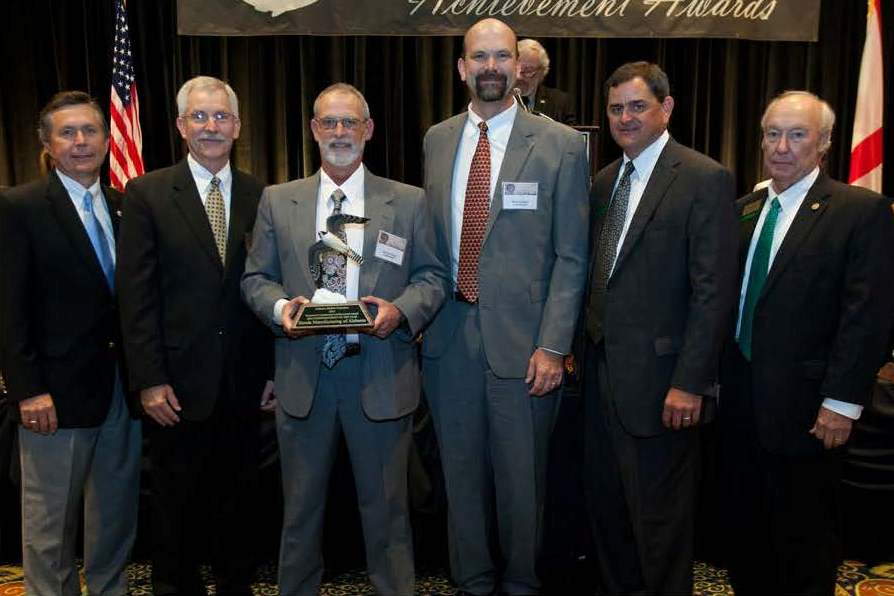HMA has been awarded the Alabama Wildlife Federation 2014 Governor’s Conservation Achievement Award as Air Conservationist of the Year.
This award was presented to HMA in recognition of the company’s efforts to significantly reduce emissions.
In 2012, HMA expanded Line 2 production operations to increase overall annual vehicle output by more than 10%. One result of this expansion was a potential increase in Volatile Organic Compound (VOC) coating emissions from our paint shop operations.
To offset these emissions, a new fluidized-bed carbon adsorption (FBC) system was installed to capture and destroy VOCs from certain painting processes.
Historically HMA’s VOC emission control strategy has been to employ a combination of pollution prevention (through use of waterborne coatings for painting vehicle bodies and good work practices) and regenerative thermal oxidizers, or RTOs, to capture and destroy emissions from our coating processes.
As part of the 2012 expansion, HMA’s original intention was to install a second regenerative thermal oxidizer to control bumper coating VOC emissions in addition to the RTO currently in service; however, it was determined that an FBC system would not only be equally effective for VOC control but would also generate lower pollutant emissions from natural gas combustion.
The fluidized-bed carbon adsorption process consists of three process steps:
• an adsorption tower, through which coating booth exhaust streams carrying VOCs are passed and captured (or adsorbed) by the carbon in the process,
• a desorption tower, where the VOC-laden carbon is heated and the VOCs are driven off the carbon in a small air volume stream, and
• a small oxidizer to destroy VOCs concentrated in the desorption tower exhaust.
A small amount of natural gas is used during process startup, but the system is designed to use the concentrated VOC stream being burned for destruction in the oxidizer as its own fuel source, thus eliminating significant natural gas use. Additionally, the exhaust from the oxidizer is used as the heat source to strip VOCs from the carbon in the desorption tower. A diagram is attached to show process detail.
Despite the overall increase in Line 2 production, HMA is realizing an overall reduction in plant VOC emissions of nearly 60 metric tons annually as a result of the installation of the FBC system.
Also, the new carbon adsorption system uses approximately 20% of the energy of an RTO system.
By installing an FBC system instead of a second RTO as part of the expansion, HMA was able to avoid an increase in direct annual emissions of almost one metric ton of NOx and over 1000 metric tons of CO2.
HMA is continually evaluating new, more efficient technologies for pollution prevention and control. As a result of the significant reductions of energy, CO2, VOC and NOx emissions realized by using FBC technology in Line 2 operations, HMA is currently considering FBC technology for Line 1 operations.

